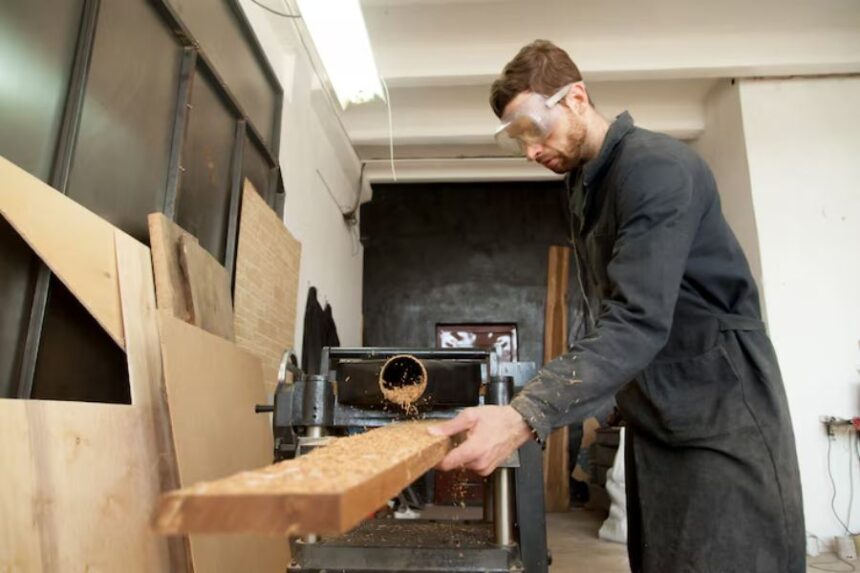Investing in a wood CNC (Computer Numerical Control) machine can be a game-changer for woodworking professionals, hobbyists, and small business owners alike. These machines offer unmatched precision, efficiency, and versatility when it comes to cutting, carving, and shaping wood. However, with a wide range of models, features, and price points on the market, knowing what to look for when buying a wood cnc machine is essential to make a smart and satisfying purchase.
In this post, we’ll walk you through the key factors to consider so you can choose the right CNC machine for your needs.
Determine Your Purpose and Project Needs
Before diving into technical details, think about what you plan to use the CNC machine for. Are you focusing on small craft projects, detailed carvings, cabinetry, furniture, or large-scale production runs? Your intended use will influence the machine’s size, power, and capabilities.
- Hobbyists may do well with a desktop or benchtop CNC machine.
- Small businesses or workshops might need a mid-size CNC router.
- Large-scale manufacturers require industrial-grade machines with automated features.
Clarifying your primary use will help narrow down the best models and avoid paying for unnecessary features.
Check the Work Area Size
The working area or cutting area determines the maximum size of material the machine can handle. Common work area sizes range from about 300mm x 180mm for hobby machines to over 1500mm x 3000mm for industrial models.
Ask yourself:
- What are the largest pieces of wood you plan to work with?
- Will you need to scale up production in the future?
Make sure the CNC’s work area aligns with your project requirements, allowing enough space for your typical designs.
Look at the Spindle Power and Speed
The spindle is the part of the CNC machine that rotates the cutting tool. Its power and speed play a crucial role in how efficiently and smoothly you can cut through various wood types.
- For softwoods and light-duty tasks, a spindle with lower power (around 1–2 kW) may suffice.
- For hardwoods or heavy-duty tasks, you’ll need a more powerful spindle (3 kW or higher).
- Check the spindle’s RPM range, as higher speeds are helpful for detailed carving and engraving.
Consider Build Quality and Machine Rigidity
A CNC machine’s frame and construction greatly impact its durability, accuracy, and vibration resistance. Look for:
- A rigid frame made of steel or cast iron for stability.
- Ball screws or linear rails for precise movement.
- High-quality bearings and components to ensure longevity.
Avoid machines with flimsy or plastic components that may compromise precision or wear out quickly.
Evaluate the Control System and Software Compatibility
A user-friendly control system makes all the difference in how easily you can operate the machine. Check:
- Whether the machine comes with an intuitive controller.
- The software it’s compatible with — popular options include Mach3, Mach4, GRBL, and proprietary software.
- If the software supports common file types like DXF, STL, or G-code.
Make sure the control system and software match your skill level and workflow.
Check for Additional Features
Depending on your needs, additional features can boost productivity:
- Automatic tool changers (ATC) for multi-tool projects.
- Dust collection systems to keep your workspace clean.
- Touchscreen interfaces for easier operation.
- Vacuum tables for better material holding.
While these extras can increase costs, they often pay off in convenience and efficiency.
Review Customer Support and Warranty
Buying a CNC machine is a significant investment, so reliable customer support is a must. Look for:
- A good warranty period (usually 1–3 years).
- Access to technical support, spare parts, and repair services.
- Positive reviews or recommendations from other users.
A strong support system can save you time, money, and frustration down the road.
Final Thoughts
Choosing the right wood CNC machine comes down to understanding your needs, knowing what features matter most, and balancing quality with budget. Take the time to research, read user reviews, and, if possible, see the machine in action before buying. By focusing on work area size, spindle power, machine quality, control systems, and after-sales support, you’ll set yourself up for a smooth and productive woodworking experience.




